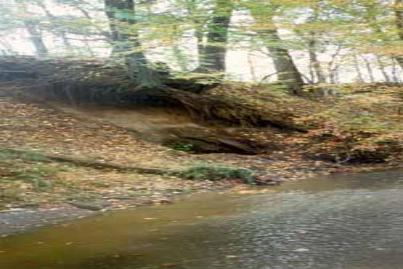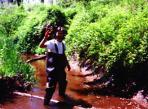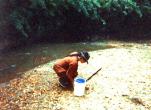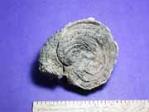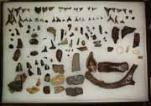| Big Brook is located in Monmouth Co. and transects the border of Colts Neck and Marlboro, New Jersey. The stream cuts through sediments that were deposited during the Late Cretaceous. This web site is for the aid in identification of the shark teeth and the other fish, reptile, and mammal remains from this site. This locality is famous for its' prolific fossils, especially the diverse and plentiful shark fauna. |
| Big Brook Identification Page |
Links:
| Having trouble identifying material from Big Brook? |
Very Common - You can expect to find multiples of these fossils on an average trip.
Common - You can expect to find one or two of these fossils on an average trip.
Less Common - You can expect to find one of these fossils in a few average trips.
Uncommon - You can expect to find one or two of these fossils in a year of average trips.
Rare - Only one to a handful of these fossils has been found.
Common - You can expect to find one or two of these fossils on an average trip.
Less Common - You can expect to find one of these fossils in a few average trips.
Uncommon - You can expect to find one or two of these fossils in a year of average trips.
Rare - Only one to a handful of these fossils has been found.
| "A Stream of Possibilities" |
| Explanation of Terms: |
| To view the picture full size click on the image. |
| Some of the pictures have multiple views. These are marked by an *. Just place the mouse on the picture and let the other picture load. Then you can toggle back and forth between pictures by running the mouse over them. All specimens are in the collections of the author, except where noted. |
| * |
| * |
| Ed says, "I got one!" Peter & Derek collecting |
| Vertebrate & Invertebrate Collections |
| The tools of the trade Shark tooth in matrix |
| Exogyra in life position |
| A gaggle of Belemnitella in the Marl |
| Elaine scanning the banks Tony says, "I got one, too!" |
| * |
1.
2.
2.
1.
2.
2.
1.
2.
2.
| * |
1.
2.
2.



| Some of the names of the fauna have changed or have been reassigned. I marked these in Green with the old name in quotes. |


The editor would like to thank the efforts of the following people for which this web site would not be possible: Edward Otte
who is a co-author of this site and all the drawings, Peter Yoost (my dad) for going on many of my adventures, Dave Paris,
Barbra Grandstaff, Robert Ramsdell, and Willam Gallager of the New Jersey State Museum, Carl Manning from the AMNH,
Diana Tasco for typing.
who is a co-author of this site and all the drawings, Peter Yoost (my dad) for going on many of my adventures, Dave Paris,
Barbra Grandstaff, Robert Ramsdell, and Willam Gallager of the New Jersey State Museum, Carl Manning from the AMNH,
Diana Tasco for typing.
Acknowledgments:

The Identification Pages:
General Information Pages:
| All mesurements in pictures are in inches. |
Local Organizations and Clubs:
| Other: |
Video Links:
If you have any suggestions of Videos,
let me know.
let me know.
This is what the concretions from Big Brook look like.
These are NOT fossils, but are mineral lumps made of
Siderite and Limonite that form mostly in the Mt. Laurel
Formation. They can look like bones and teeth.
These are NOT fossils, but are mineral lumps made of
Siderite and Limonite that form mostly in the Mt. Laurel
Formation. They can look like bones and teeth.
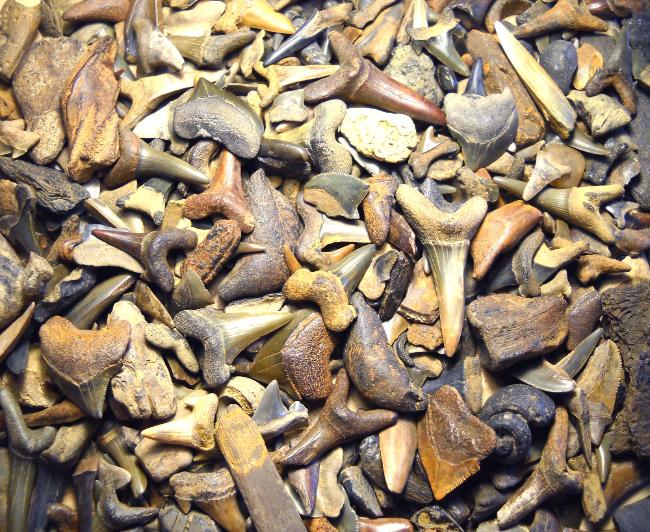
If you are looking to collect at this amazing locality, check out this site:
